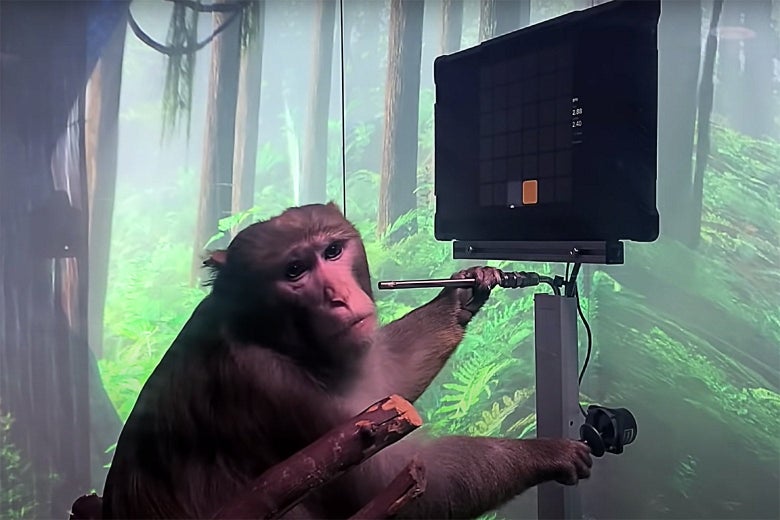China’s nonhuman primate edge in brain-laptop interface investigation.

Pager was feverishly going a joystick as he performed his most loved match, Pong, but it was basically a force of habit—the joystick alone was not in fact connected to just about anything. Yet the ball moved from paddle to paddle. He was using his views to participate in, through use of his direct neural connections from his newly implanted Neuralink product. Pager isn’t your usual 9-yr-old, while: He is a macaque monkey and will supply beneficial information and facts to the firm owned by Elon Musk, so it could at some point go forward with human testing for this invasive professional medical gadget. In actuality, his gaming effectiveness was at a are living Neuralink occasion, in which persons were being first released to a functioning implanted model. Pager is also getting an progressively a lot more precious and constrained useful resource in international study. Even extra sizeable, he may well also be a essential component to worldwide politics and countrywide stability.
As we have viewed around the past two several years, the COVID-19 pandemic has pressured and uncovered weaknesses in clinical offer and exploration. There was no exception for nonhuman primates made use of in healthcare analysis. As the New York Moments documented in February, COVID vaccine researchers were achieved with worldwide shortages on primates, which are vital to early drug trials. This dilemma was exacerbated when China, the majority worldwide provider of nonhuman primates, banned their export. Prior to the pandemic, China provided much more than 60 percent of the analysis primate applied in the United States. How and when it will return to exporting research primates is unclear.
This is not the 1st time we have dealt with worldwide primate offer challenges. India after represented the premier supplier of primates, right until 1978, when considerations about the primates being utilised in U.S. army testing pushed the India governing administration to halt the sale. This press was viewed as a reaction to animal rights teams, as the primates applied in armed forces screening ended up normally killed. China stuffed that void by featuring each offer and far more lenient ethical and regulatory principles. It courted U.S. experts not only to use its primates but also come and create their analysis in its labs. This quickly helped with offer, but perhaps did not bode well for animal welfare. Even though Western researchers have claimed the primate are not mistreated, there is no denying the regulatory and ethical frameworks are much laxer. Right now, China is probably the greatest participant in the current market for nonhuman primates.
At present, quite a few firms are establishing refined mind-laptop or computer interface gadgets, or BCIs, a lot of of which will need to have to be tested on primates ahead of starting off trials on people. These units are establishing in health-related, military services, and consumer device location. They goal to supply new treatment options in some of medicine’s most hard maladies, these kinds of as paralysis, speech apraxia, and even depression. Nonetheless, they will be collecting, arguably, the most sensitive data feasible: human ideas by themselves. In actuality, scientists lately applied a BCI on an personal with paralysis, allowing them the opportunity to produce with thought dictation.
Primate research is crucial to China’s said approach of dominating the foreseeable future of both biotechnology and artificial intelligence. The development of BCIs lies at this nexus—the “China Mind Challenge” prioritizes BCIs. Chinese scientists have acknowledged that they currently lag the U.S. in BCI growth but assert they could capture up inside of 5 to 10 years. Though that estimate might be overly optimistic, it unquestionably appears to be achievable, specified China’s support—and its benefit in primate investigate.
Considering the fact that the mid-2000s, China has been doing work to build up primate analysis infrastructure. In the approach, it is legitimizing its very own study initiatives as properly as attracting international associates and shoppers, enticed by the scale, fairly very low value, and relieve of conducting their experiments in Chinese borders. There are far more than 100 establishments and firms that deliver non-human primate animal designs in China at present. The premier, which is in partial operation but nonetheless underneath construction, is the National Useful resource Centre for Non-human Primates in the southwest Yunnan province. This nationally centralized “useful resource tank” is geared towards assembly the requirements of China’s intention for long run biotech domination.
This approach of setting up primate investigate infrastructure complex sufficient to each satisfy the requirements of Chinese biotechnology technique, whilst also being captivating to foreign entities, is relating to for a couple motives. Initially, domination of the primate experiment market suggests that the China’s centralized procedure can deny access when strategically useful, like if we professional a further international pandemic, or if stalling U.S. advancement of a technology would propel China’s individual. China’s buildup was, at the very least in aspect, been a response to primate research bottlenecks somewhere else—but now it can deploy its very own bottlenecks to stymy other folks. Upcoming, management of the primate research sector lends by itself to China’s quest for technological know-how transfer, as overseas entities who want to do experiments with Chinese primates will have to ship their technological innovation and experience to China. Establishments and firms on the slicing edge will proficiently be teaching China how to shut the innovation hole.
Lastly, China has established an built-in approach of translating primate experiments into human medical trials by way of value and velocity incentives. Its aim is to entice international entities to deploy their innovations to China’s domestic market initial, and in ways that the central federal government can impact. Although foreign scientists may advantage from the lax regulatory setting, they may well inadvertently be handing in excess of useful intellectual house to China. Further more, China may compile precious neural data gathered by these BCIs that presents them not only a technological gain, but also may possibly pose stability risk to the U.S., as Large Facts permits for surveillance and new types of cyber-assaults.
The COVID-19-induced nonhuman primate shortage from China need to provide not basically as a dilemma of world offer chain, but as a warning indicator for long term tech and drug progress. On top of that, our gold normal for animal welfare is meaningless if we let industry to quietly transfer into China for neuro-machine development. The time has occur for the U.S. to shut the gap on Chinese dependence on non-human primates for investigation. It signifies a likely trojan horse for U.S. tech builders, plan makers, and national safety.
Foreseeable future Tense
is a partnership of
Slate,
New America, and
Arizona Condition University
that examines rising technologies, public policy, and modern society.






